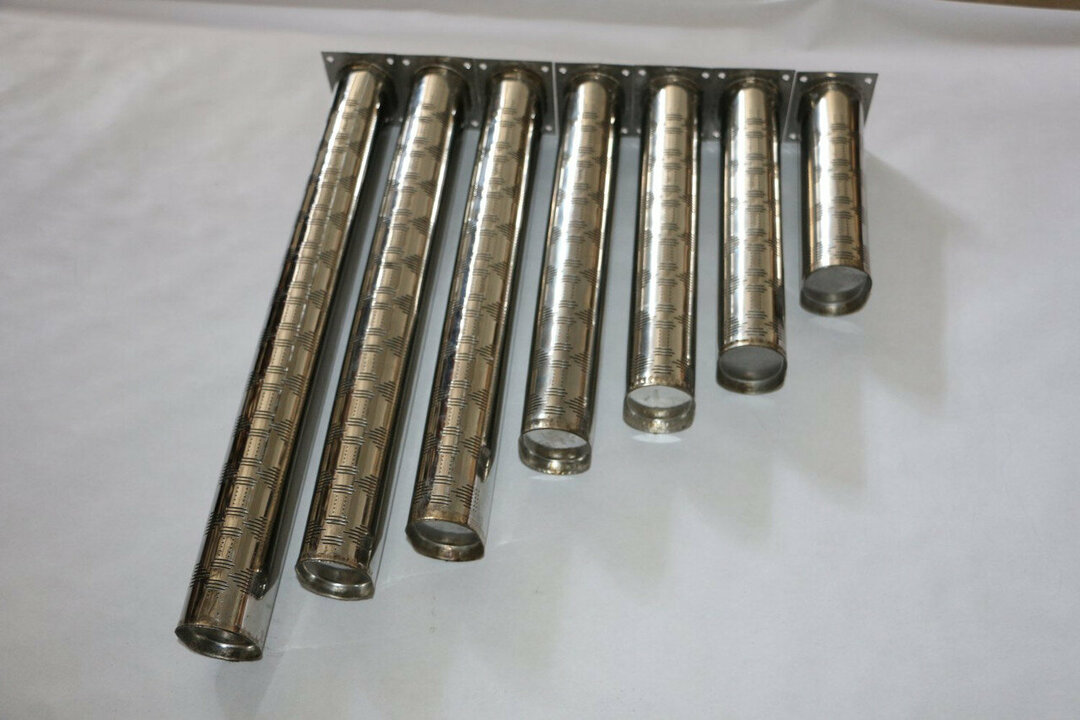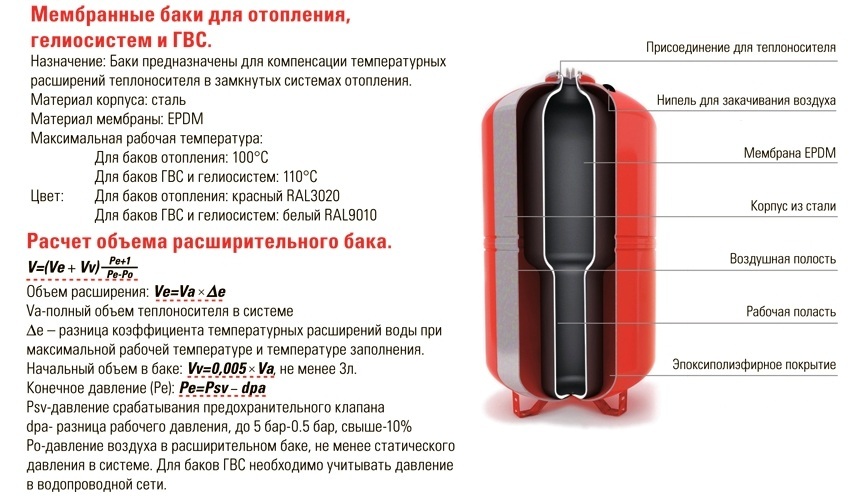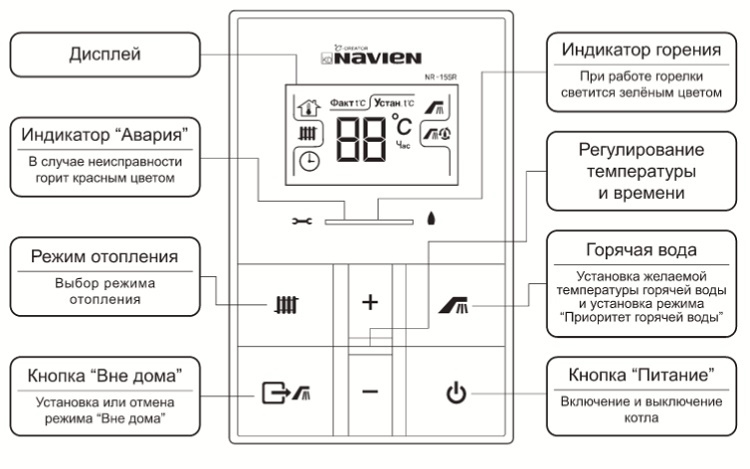Many modern heating systems are controlled by automatics and need a constant supply of electricity for correct operation. If regular interruptions occur in the energy source, experts recommend buying a backup generator. When the absence of electricians is rarely observed and does not last long, it is enough to install a progressive inverter for the heating boiler.
It converts direct current from the battery into alternating current and allows the heating equipment to fully function for a certain time even in the absence of electricity. Let's take a closer look at the main characteristics of the device.
The content of the article:
- General characteristics of the device
- Complete set of invertor power sources
- Design features of the product
-
How are appliances classified?
- The principle of operation of units off-line
- How do Line-interactive modules behave?
- Features of on-line devices
- The advantages and disadvantages of the equipment
- Basic rules for choosing a module
-
List of popular models and manufacturers
- The device company ETK "Energy"
- Device "Elim-Ukraine"
- Rucelf UPI-400-12-EL unit
- Conclusions and useful video on the topic
General characteristics of the device
An inverter is primarily a DC to AC converter. In parallel, it changes the amplitude of the transmission and generates the output signal of the appropriate frequency. Charge the battery and monitor its current capacity by itself the device can not.
Many modern manufacturers equip their products with related elements, additional chargers and control control unit. Such models are already classified as uninterruptible power supplies (UPS) and have the ability to solve a wider range of tasks.

For uninterrupted operation of inverter equipment for boilers manufacturers give a great guarantee - from 10 to 12 years with 600-620 active cycles and discharging batteries at the level of 80-83%
Integrated into the heating system, they monitor the presence of current in the network and, in the event of a sudden electrical outage, they maintain the equipment for some time.
In this way, preventing the potentially possible freezing of water in pipes and radiators (in the winter season), the breakdown of individual fragments of the system and other unpleasant problems.

An inverter equipped with an extra battery allows heating equipment to work for a long time and efficiently even with a long absence of centralized electricity supply.
Simple, budget products perform only one direct function - providing the boiler with energy to work for a certain amount of time. Complex progressive modules have an expanded potential.
In addition to their main mission, they act as stabilizers and equalize the voltage in the system, thus protecting the equipment from unnecessary load and failure.
Complete set of invertor power sources
In the modern market of domestic related equipment, inverters are available in several versions. Some brands produce the most simple units that work only as voltage converters.
The battery is not originally included in the package of such modules, but its connection is allowed by design, and the user may in the future buy this item separately.

Acquire inverter equipment is necessary only in the regional official representative of the manufacturer. There, in addition to the product, the customer will be given a warranty service voucher and, in the event of problems identified during the first working days, will replace the product with a serviceable one.
Some types of inverters have a built-in battery of a certain, usually small capacity, but it is not possible to increase its volume due to external additional batteries.
Devices of this type support the operation of heating equipment for a short time and for the most parts serve to ensure that the owner can correctly disconnect the system from the power supply in case of emergency situations.
In the universal units build the base battery. The expansion of the capacity of the device is carried out by adding external batteries. In this way, the duration of the device is increased from several hours to several days.
Design features of the product
The inverter has optimal dimensions and is shaped like a parallelepiped. It is placed on the floor in the immediate vicinity of the boiler or mounted on the wall (if it is provided for by the design features of the model purchased).

A working battery transmits a constant current of 12 V. The inverter absorbs it and converts it into AC with a traditional voltage of 220 volts, and also monitors the charge level of the battery itself.
In advanced models, the inside of the enclosure contains a control unit with a boiler changeover system and a base battery. The first node keeps under control the availability of energy and switches the equipment to the autonomous mode of operation in a timely manner if a supply outage occurs in the central network.
The second node (battery) provides power to all electronic components of the boiler for the entire period of power failure or until the moment when the charge is over.
How are appliances classified?
Almost all inverter devices are components of the UPS (uninterruptible power supply) and perform the same function - convert the direct current from the battery to AC.
In the event of an unexpected blackout, the backup power supply system is activated, and the heating equipment instantly switches to stand-alone mode of operation. This allows you to maintain the full functioning of the heating for a certain period of time - from several hours to several days.
By the principle of operation, the devices are divided into three types:
- Off-line (backup);
- Line-interactive (linear-interactive);
- On-line (double conversion).
Each type of device has its own specific characteristics and capabilities that allow solving various tasks. After a thorough study of the parameters of all three devices, it is easy to find the best option for you.
The principle of operation of units off-line
Off-line-model has a simple structure and is considered a backup. When the grid is operating in standard mode and demonstrates stability, and the voltage is not "Jumps" between the extremes, the device "sleeps" and does not participate in the work of household heating system.
If the current level drops to 175 V, the unit translates heating boiler on charge from the rechargeable battery. As soon as the situation is restored, the inverter UPS reconnects the heating equipment back to the main network.

Off-line device is ideal for working in conjunction with a gas heating boiler, but only if there are no problems with voltage stabilization in the central power grid
Each transition from the main power source to an autonomous one and back lasts no more than 10-15 seconds and does not affect the functionality of the heating equipment.
The working range of most offline-type converters lies in the range of 170-270 V.

Progressive inverter converters are usually equipped with informational liquid crystal displays and current regulators. They do not have an active cooling system. Due to this, the process of work is absolutely silent and does not prevent residents with annoying sounds
With a constantly “jumping” voltage, switching from the main system to the autonomous system occurs too often and leads to rapid deterioration of the batteries and the device itself. Stabilizers are not included in the instrument, therefore when connected, both at the input and at the output, the mains voltage does not change.
Therefore, we recommend reading our article on how to choose a voltage regulator for a heating boiler. Read more - read Further.
Depending on the manufacturer and model, backup devices can work effectively with electrical power from 300 to 3,500 watts. Some products provide for cyclical operation and the ability for 24 hours and no longer allow freezing of communication fragments of the heating system.
How do Line-interactive modules behave?
A line-interactive device is a switching device and is considered the best option for universal equipment. The product consists of an off-line source, a converter, a switching relay and a low-frequency stabilizer device.
In the standard operating mode of the unit, the heating equipment consumes the resource of the central power line. The output voltage is controlled by a stabilizer and special filters (on some models), which smooth out emerging noise and neutralize network interference to which the boiler itself is connected.

A gas boiler connected to a linear-interactive converter equipped with an additional external battery can work from 8 to 10 hours (depending on the battery capacity)
Linear-interactive units feed the electrical devices with useful energy for a very short period of time (not more than 20 minutes).
To provide the resource for heating boilers, they use not ordinary line workers, but advanced products with an expansion function, providing for the connection of an additional external battery batteries. Such devices can support the operation of the boiler for a longer time (up to 10 hours depending on the manufacturer).

The linear-interactive converter puts the battery into operation extremely quickly (approximately within 2-4 seconds). The output flow of the device can be pulsed or sinusoidal. For heating boilers, experts recommend putting the second option.
The built-in current regulator allows the equipment to work correctly without switching to a battery with an extended voltage range. The device provides backup power from the battery and equalizes the mains voltage. The disadvantages of products include the impossibility of correcting the current flow frequency and the minimum smoothing of the sinusoid (no more than 20%).
Features of on-line devices
Online devices work continuously.
The conditional connection scheme of the heating equipment in this version is built in the following sequence:
- central electrical network;
- inverter uninterruptible power supply;
- boiler.
The principle of operation of the device is reduced to re-transformation of the general parameters of the electrical network. At the first stage, at the entrance to the inverter, the alternating voltage is converted to a stable equivalent with a value of 12 V.
Then a reverse maneuver occurs and at the output of the inverter apparatus the voltage is converted into alternating with a value of 220 V.

In online systems, the battery performs a buffer function and is constantly on charge. In parallel, inside the battery, the output converter is activated and forms from a constant AC voltage with indicators of 220 V 50 Hz, which is in no way dependent on voltage, formed at the entrance
The main advantage of such a plan is to provide the power supply unit of the heating boiler with high-quality voltage. Among the minuses there are only two positions: the high cost of conversion equipment and the low level of performance.
The advantages and disadvantages of the equipment
The inverter is convenient because it is not tied to a specific type of constant voltage source. The unit can be powered using a conventional car battery, a generator set with the simple principle of rectifying a signal, or from UPS batteries.
If the module does not have a built-in charger, the owners will have to personally monitor the level of capacity and the degree of discharge of the device.
Among the main advantages of the device:
- a wide range of products and the ability to choose a product with an almost perfect output sine wave;
- correct operation with all sources of nominal voltage and direct current;
- reasonable cost compared to other similar units of similar capacity;
- no restrictions on increasing the capacity of the battery and the duration of autonomous operation.
The disadvantages include such criteria as:
- lack of control over the level of charge / discharge of the battery;
- setting the threshold is not subject to additional correction;
- the need to arrange an external communication scheme for automatic activation when electricity is turned off in a residential area;
- the high cost of "tricked out" modules with a wide range of features.
The final choice of a suitable device is strictly individual. It all depends on how strong the voltage “jumps” in the network, how often consumers disconnect from the supply of a resource the central electrical system and how long they have to sit without electricity.
Basic rules for choosing a module
When planning the purchase of an inverter for the boiler, you need to pay close attention to such parameters as:
- input voltage and current;
- output voltage level;
- the degree of distortion of the sinusoid output voltage;
- the actual conversion factor;
- total power output.
For household gas boilersmainly use inverter installations 12-220. These units convert the DC voltage of the battery 12 V to a sinusoidal voltage of 220 V with minimal distortion.

The sine wave output voltage of the inverter should not exceed 3%. These indicators mean that the waveform is as close as possible to the sine with a slight deviation in the direction of a sharp decline or peak
You can get a more powerful bunch of units (converter 24-220 and battery 24 B), but at the same time it is necessary to find out exactly what the maximum input current is calculated for inverter.
Only after receiving this information it is worthwhile to proceed with the purchase.

Inverters offered on the domestic market are initially designed for low quality electrical networks. The units have all the functions of protection against energy surges and an option that allows the user to set the upper and lower voltage limits up to a volt
The controller and control unit of popular gas boilers usually consume about 150-200 W of power. Responsible for the proper circulation of the heating fluid in the system, circulation pump takes another 125-150 watts. To determine the required power of the inverter, these data must be added and multiplied by 2.5 to take into account the volume of the starting current at the time of launch.
The finished figures must be multiplied by 1.2 again to take into account a certain amount of power. The received data is memorized or written down. When buying an inverter, make sure that the basic power declared by the manufacturer necessarily exceeds the calculated figures.
List of popular models and manufacturers
A lot of domestic and foreign companies, firms and organizations work in the segment of the electrical engineering market. Some of them produce goods under license, others develop their own technologies and offer customers unique, progressive and competitive products at a reasonable price.
The device company ETK "Energy"
Inverter Energy PN-500 is an inexpensive practical device that provides uninterrupted power supply for modern low-power boilers. Produced at the production facilities of ETC Energia - one of the leaders of the domestic electrotechnical market.

Inverters ETK "Energy" fully comply with all state-of-the-art standards and requirements for household electrical equipment. The environmental safety and quality of products is confirmed by internationally certified certificates issued to companies.
Connection to the device of one basic battery ensures full autonomous operation of the fuel boiler for 6-7 hours. If you connect a second battery, the duration of operation will double.
The unit produces at the output a pure sine, which contributes to the preservation of expensive electronic “filling” of modern heating boilers. When the operation of the central electrical system is normalized, the inverter automatically switches to the voltage stabilization mode and protects the boiler from sudden voltage surges.
Device "Elim-Ukraine"
The company "Elim-Ukraine" has been working in the market of electrical equipment for more than 10 years and is respected by customers.
Devices manufactured under this brand have a switching power supply, a pleasant LED display for the eye and demonstrate an extremely high level of efficiency (up to 98%). Give a pure sinusoidal signal without distortion and peak levels of overvoltage.

Inverters of the company "Elim-Ukraine" are also convenient because they work correctly with gel and car batteries.
Equipped with protection against overheating, general overload and deep battery discharge. One of the expansion options allows you to connect to the equipment an additional battery of any capacity to maintain autonomous operation of the heating system even in the absence of voltage in the central trunk networks during the day and more.
Rucelf UPI-400-12-EL unit
The device Rucelf UPI-400-12-EL belongs to the category of linear-interactive energy sources. It has a built-in stabilizer, which, in the presence of even the minimum mains voltage, equalizes the current flow without activating the battery. It gives the chance to economically spend a resource of rechargeable batteries, without overloading and prolonging the term of their service.

Important advantages of Rucelf UPI are completely silent operation and effective provision of devices with the necessary power supply during an emergency power outage
Reasonable cost is another characteristic feature of the products of the Russian company Rucelf.
Due to this, customers can create a fully-fledged autonomous infrastructure for feeding heating systems during an emergency power outage or voltage drops.
Conclusions and useful video on the topic
How to buy an inverter and choose the best battery capacity for it. How to install the equipment on the boiler and forget about the interruptions to the electrician forever:
Detailed overview of the device, principles of operation and functionality of the popular model of the inverter voltage unit with a pure sine wave:
How does an inverter voltage converter behave in its work, having no built-in rechargeable battery inside the case:
Installing an inverter device on the heating boiler allows the heating system to function correctly at the time of intense voltage drops and with a total blackout. The owners do not feel any discomfort due to the lack of electricity and do not freeze if this unpleasant situation happens during the cold season.
In addition, the device protects communication elements from possible damage caused by unexpected shutdown of light, and helps the equipment to work as long as possible and with maximum by efficiency.
Already have experience using inverters for heating boilers? Please tell our readers which device did you choose? What guided by this? Are you satisfied with the operation of the device? Leave your comments, share experiences, ask questions in the block below.


